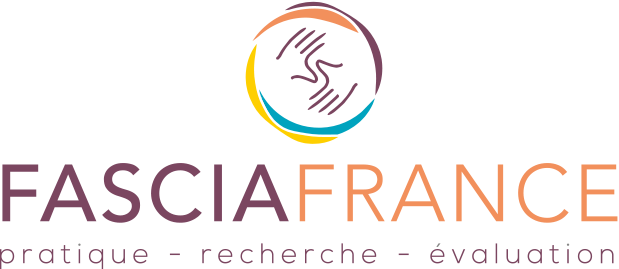Bernard Payrau, MD, MT, Nadine Quere, MSc, PT, MT, Elisabeth Breton, MSc, Christine Payrau, MD
Oral presentation : 10th World Congress on Myofascial Pain Syndrome and Fibromyalgia Syndrome – October 4-8, 2017 – Bangalore (India)
Article published in Breakthroughs in Muscular Pain. Research and Practice. Myopain 2017. Editors : SharanD, Samuel R J. Published by Recoup Neuromusculoskeletal Rehabilitation Centre. Bengaluru (India):16-23.
Abstract :
- Background
Based on stress management, we carried out a study to contribute to the elaboration of the necessary network of proof of efficiency in CAMs. The background is the everyday testimony of relief from patients telling how relaxed they are after undertaking a session of therapies such as fasciatherapy-MDB (Fs), reflexology (Rx), hypnosis (Hp) or music therapy (Mt). The research question was do these techniques have de-stressing inherent properties?
A NRT prospective clinical open trial with a pretest-posttest (STAI-Y) assessing Fs, Rf, Hp, Mt and a nonintervention resting group, on separate samples of natural groups was carried out. Participants used to take sessions of different CAMs, were exposed to a single semi-standardized session of their choice.
Through the 308 outpatients’ valid forms the main measure of effectiveness shows stress level significant decrease in each condition. The most and equally effective are Fs, Rf and Hp with more than 75% of the symptomatic individuals becoming asymptomatic after session.
- Objective
The somatic results centred on the stress-related body-tension and their treatment are the purpose of this lecture based on our study on stress management.
The evaluation instrument of the stress level is the STAI well-known for mainly inquiring on cognition and behavioural domains. But the somatic dimension is taken into account with two items about the body tension concerns. Among the 20 items the STAI consists of, the 2 body tensions-related ones are “I am relaxed” and “I am tense”. In our study, precisely these two items show one of the highest decrease of the 20, in accordance with the words of the patients.
Stress is diversely considered as predisposing, triggering or promoting them. It is also a reinforcement factor, originating a vicious circle. Thus, Fs, Rf and Hp showing capability of decreasing stress and the body-related tensions, we present a documented proposal of 3 different methods for the relief of the myofascial pain syndrome (MPS) and the fibromyalgia syndrome (FMS).
- Description
Being part of the emotional process involving perception, cognition and body reactions, the stress related body-tensions lies both in the scope of the study and of the myofascial dysfunction subject.
The objective body-tension mostly originating in connective and muscle tissues, leads to the concept of myofascial resting tone (HRMT). It is a somatic objective contributor to the body-tension and is perceived per se. As a matrix of the body, connective tissue is one of its two components. Stress-related consequences affect connective tissue, especially its tensional qualities. Muscle fibres also contribute to HRMT. In stress process, muscle tone variation responds to the action-tendency activation and its muscular consequences, such as motor control stimulation and tone activation.
The second contributor to the tensed-body feeling is of subjective nature. Supported by interoception and proprioception, information on the level of the myofascial network tension is continuously transmitted to the brain, resulting in conscious perception of bodily state. But, stress may affect interoception, generating sensory disturbance.
- Conclusion
Acute stress initiates myofascial tension taking part in the Alarm Syndrome favorable adaptation, but negative consequences may occur too. Multiple and complex is the experienced stress.
Resulting from shocking events in childhood, or from long-term or iterative stress, deep and lasting perturbation of biological regulation is an issue i.e. neuroendocrine regulation. Contemporary research identifies myofascial imbalance and dysfunction.
This tension plays an important role in feeling quality, changing bodily perception, and originating distressing pain. Bodily perception as an important factor of well-being or ill health sense, is one of these numerous consequences.
The interplay of stress, pain and tension results in the Gordian knot all therapists know how difficult it is to cut. Relation between clinical manifestation and stress, closing the loop, originates a typical self-sustained vicious process.
Efficiency of Fs, Rf and Hp for release of both objective and subjective stress-related body tension is suggested. Their mind and body impact could break vicious circle. Further studies should assess their efficacy on a selected MPS population.

